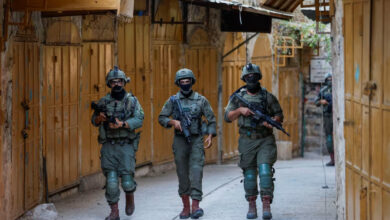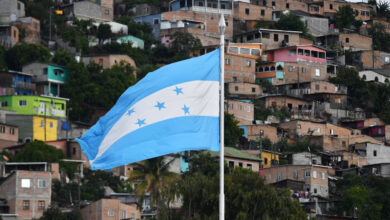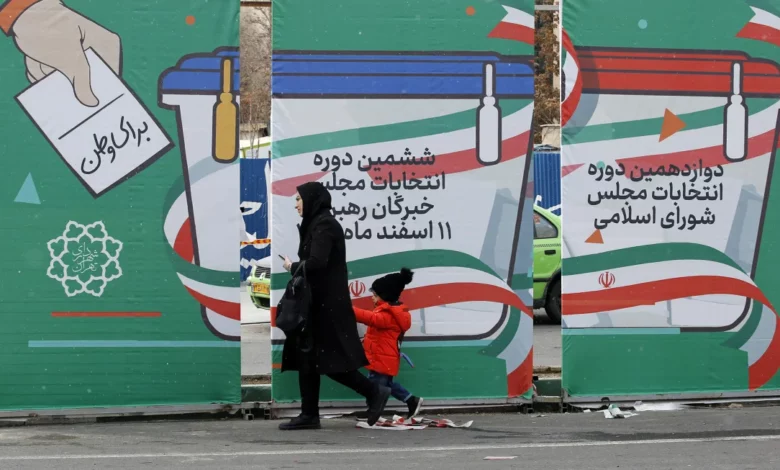
Editor’s Note: A version of this story appears in CNN’s Meanwhile in the Middle East newsletter, a three-times-a-week look inside the region’s biggest stories. Sign up here.
Iran is scrambling to boost turnout ahead of legislative elections on March 1, but calls on voters to show up to the polls may be falling on deaf ears as Iranians grapple with an ailing economy, growing political distrust and a quashed protest movement.
Some 15,000 candidates are competing for the 290-seat parliamentary election, and 144 are running for the 88 seats of the Assembly of Experts, which has the power to appoint the Supreme Leader, the highest political authority in Iran.
Supreme Leader Ayatollah Ali Khamenei is more than 84 years old, and so this incoming Assembly will select his successor if he dies during the body’s eight-year term.
Voter turnout is expected to be at record lows, however, with candidates opposed to the current hardline government disqualified amid a widespread crackdown on dissent, which rights groups say only intensified after the 2022 protest movement sparked by the death of Mahsa Amini in police custody.
“No, I will not vote,” a 23-year-old Iranian woman told CNN from Tehran. “They (elections) take place as a show and propaganda, and, in my opinion, participating in such events is being complicit and helping their political propaganda,” she said, asking to be quoted anonymously for fear of retribution by authorities.
Authorities are nonetheless eager to bring people to the polls, trying to inspire a sense of duty and resistance among Iranians amid Israel’s war in Gaza.
Khamenei this month called on Iranians to show up to polling stations, writing on X that “elections are the main pillar of the Islamic Republic.” He warned Iranians that their enemy would seek to discourage them from voting, and so casting one’s ballot was their responsibility and a form of resistance.
“Everyone should note that fulfilling these duties and responsibilities is an act of jihad in confronting the enemy, because they do not want these duties to be fulfilled,” Khamenei was reported as saying in the Tehran Times.
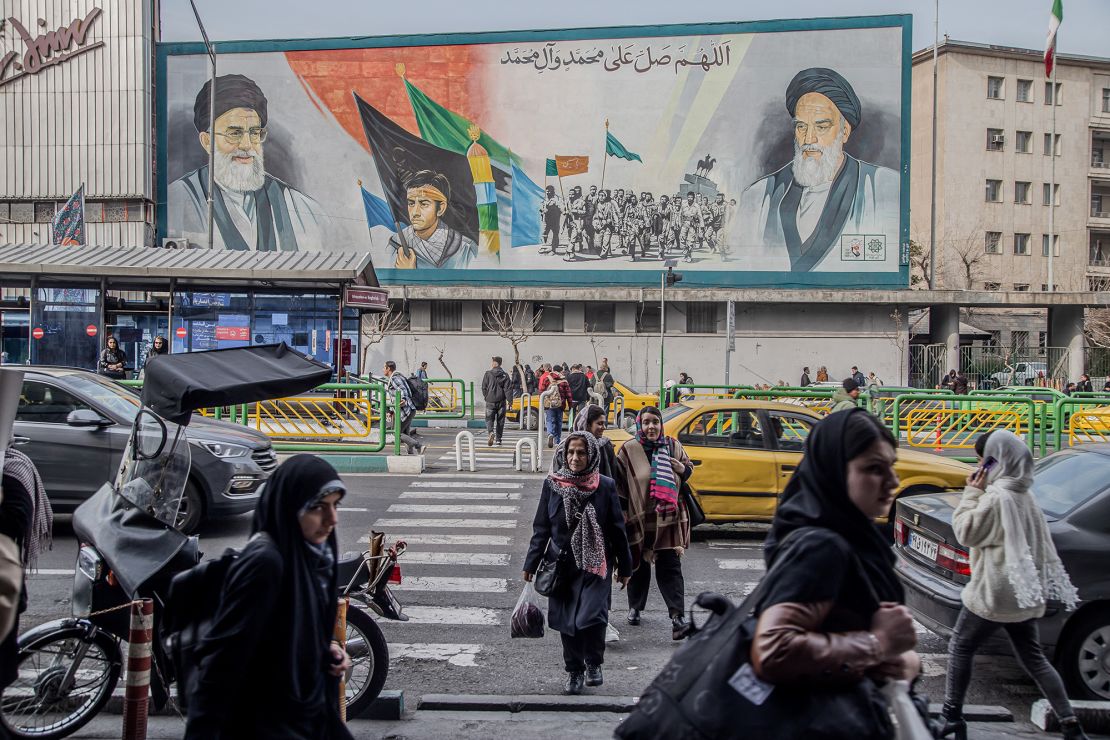
Other officials have directly cited the Gaza war to rally voters ahead of the polling day.
In a speech this month, Hamidreza Moghadamfar, an adviser to the chief commander of the IRGC, said that the “biggest supporters of the massacre of tens of thousands of women and children in Gaza are the same ones who are opposed to the people of Iran voting and are the enemies of democracy.”
The rhetoric from officials is “a desperate attempt to bring people out,” said Alex Vatanka, founding director of the Iran Program at the Middle East Institute in Washington, DC, adding that this is “typical” of Khamenei’s time.
Foad Izadi, an associate professor at the University of Tehran’s faculty of World Studies, said that it is not difficult to encourage voting by appealing to national unity against the US and Israel, as most Iranians are outraged by the images of bloodshed pouring out of the Israel-Hamas war.
“A good percentage of these people, the people who don’t like the current government in Iran, when they hear an American government official talking about human rights in Iran, they don’t accept (it),” Izadi said, adding that they see the West as having lost the right to speak about human rights after letting the carnage in Gaza go on for months.
Israel’s war in the enclave, while strongly opposed by many Iranians, may not however sufficiently sway all voters to polling stations.
“The government’s incitements, in any shape or form, to vote will not influence the people even if we include the Israel-Gaza war,” the 23-year-old woman told CNN. She added that since the government has repeatedly used the Gaza war “for its own propaganda,” those who oppose the government but support Palestinians “prefer to be silent on the issue” in order to avoid being seen as supporting authorities’ agenda.
‘Passivity is itself a choice’
More than 61 million of Iran’s 87 million people are eligible to vote next month, according to Iran’s Election Supervisory Board.
While few opinion polls have been publicly released ahead of this year’s election, the results of those that were made public predict a record low turnout. In a December interview with Iranian state news agency ISNA, Hassan Moslemi Naeini, the head of the state-run Academic Center for Education, Culture and Research, said only 27.9 percent of respondents in his latest survey said they “will definitely participate in the elections.” Meanwhile 36 percent said there is “no way they will participate in the elections.”
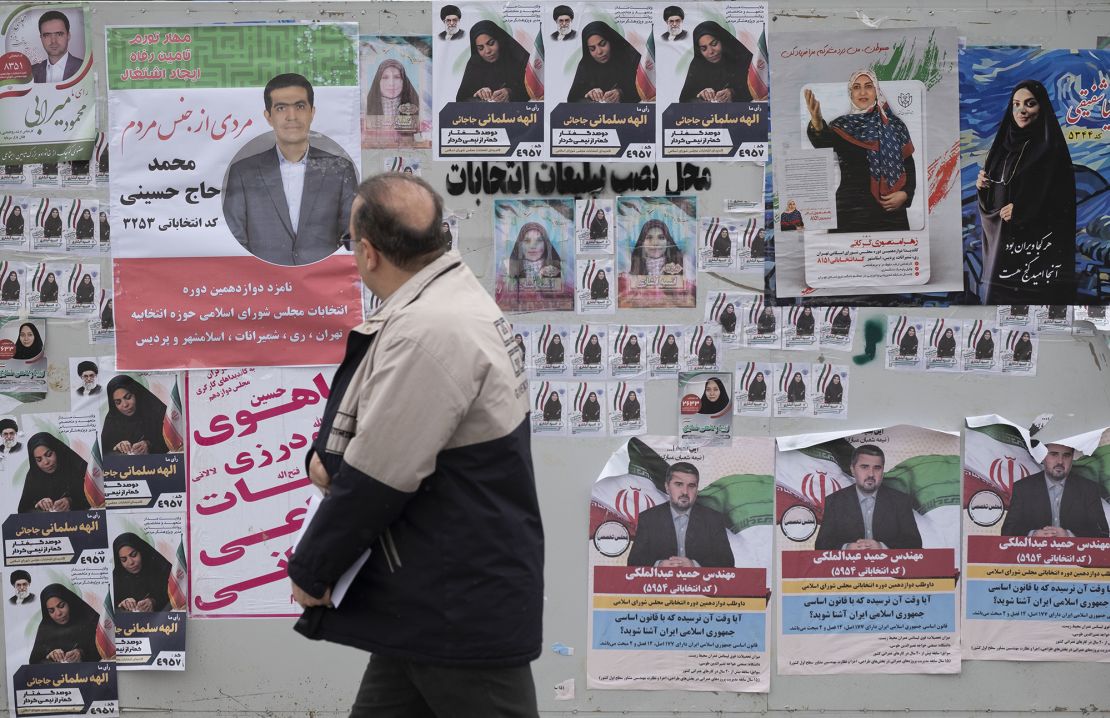
Voter turnout has been on the decline in Iran, largely on the back of diminishing trust in the regime, some experts say. While older Iranian generations have given the idea of “reform through the ballot box” a chance, said Vatanka of the Middle East Institute, Iranians today see the elections as “simply for show.”
Iran’s last presidential election in 2021, which brought hardliner Ebrahim Raisi to power, saw a turnout of 48.8 percent, down from 85 percent in 2009.
This year’s legislative election “is anticipated to have the lowest turnout in the Islamic Republic’s 45-year history,” said Holly Dagres, a nonresident senior fellow at the Atlantic Council, attributing this to “systemic corruption, mismanagement, and repression” by the state and “just how illegitimate the clerical establishment is in the eyes of the people of Iran.”
“This passivity is itself a choice and a vote of dissatisfaction with the ruling regime,” said another young woman in Tehran, adding the regime has stripped the words “election” and “republic” of their true meanings.
Jamshid Jamshidi, a doctoral candidate at the University of Oxford who researches local politics in Iran, notes however that turnout may look different outside of urban centers. In smaller cities and towns, higher levels of electoral participation are expected, he told CNN.
This week’s elections are taking place more than a year after mass protests rocked the country in 2022, in opposition to the hijab law and other social issues. The movement was quashed by authorities, and Iran’s parliament passed draconian new legislation imposing much harsher penalties on women who breach hijab rules.
A group of UN experts in September said that Iran “could have learned important lessons from the tragic death of Jina Mahsa Amini” – the 22-year-old woman who died in 2022 after being detained by the regime’s infamous morality police, allegedly for not abiding by the country’s conservative dress code.
“But its response to the demonstrations that have led to the deaths of hundreds of protestors since September 2022 shows that authorities have chosen not to,” the UN experts said.
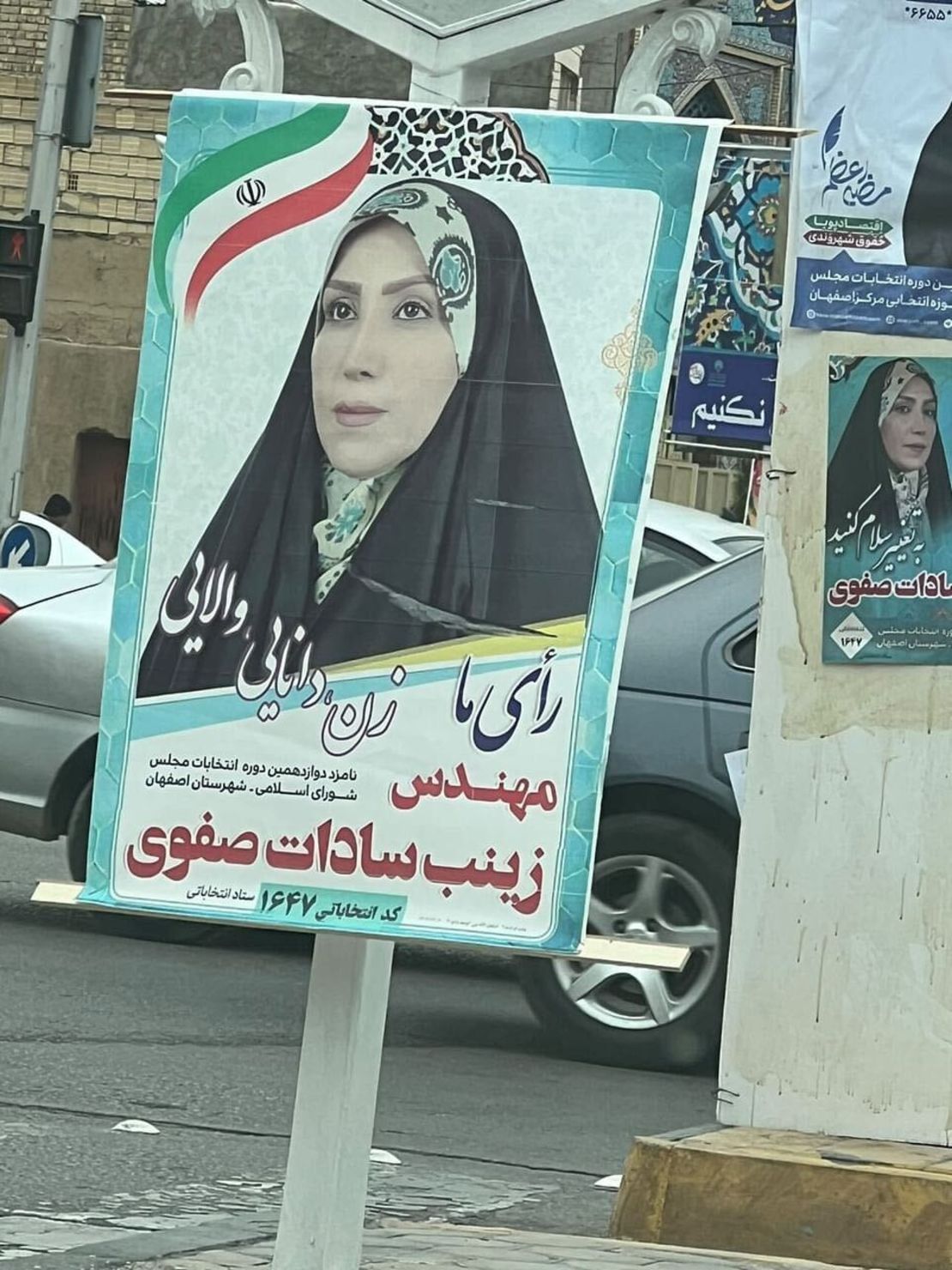
International watchdogs have also repeatedly slammed Iran for holding elections that are neither free nor fair, marked by a vetting process that restricts the types of candidates permitted to run.
This year, Iran’s Guardian Council – a powerful 12-member council charged with overseeing elections and legislation – has disqualified over 12,000 candidates from running for parliamentary seats and barred former moderate President Hassan Rouhani from running for the Assembly of Experts.
Authorities have also made clear that boycotts will not be tolerated.
A Norway-based group focused on Kurdish rights, the Hengaw Organization for Human Rights, reported this month that a Kurdish resident in Sanandaj province was arrested by Iranian security forces after calling for an election boycott.
His detention came after he released a video of himself saying, “The very act of voting is equivalent to endorsing all the malpractices and corruption,” Hengaw said.
‘We don’t get anywhere’
Crippled by Western sanctions since 1979, the Islamic Republic continues to be cut off from much of the world. Inflation is still high at more than 32 percent as of 2024, with millions falling below the poverty line.
Adding to Iranians’ economic peril are the waves of attacks exchanged between the US and regional militias backed by Tehran.
In the wake of the drone attack in Jordan that killed three US Army soldiers and injured more than 30 other service members, Iran’s currency fell from nearly 500,000 rials against the US dollar in early January, to more than 580,000 by January 29. Iranian media attributed the sharp drop in the value of the rial to the escalation of regional conflicts.
“Three Americans were killed yesterday. Today, 80 million Iranians became poorer,” wrote Iranian businessman Pedram Soltani on X.
One Iranian man, 27, who also asked to be quoted anonymously, cited economic hardships when asked why he would not be casting his vote on March 1.
“The reason being the severe inflation which exists,” he told CNN. “However much we work, morning until evening, in two places, two shifts, we don’t get anywhere.”


